They say… 
Best beer and travel writing award 2015, 2011 -- British Guild of Beer Writers Awards
Accredited Beer Sommelier
Writer of "Probably the best book about beer in London" - Londonist
"A necessity if you're a beer geek travelling to London town" - Beer Advocate
"A joy to read" - Roger Protz
"Very authoritative" - Tim Webb.
"One of the top beer writers in the UK" - Mark Dredge.
"A beer guru" - Popbitch.

|
Top Tastings 2009
ABV: 9%
Origin: Milton, Delaware, USA
Website: www.dogfish.com
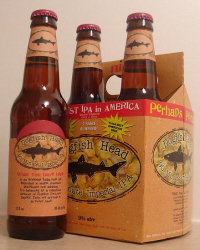 Dogfish Head 90 minute Imperial IPA From a modest British session India Pale Ale (see previous posting) to an all-cylinders-firing modern North American twist on the style.
Dogfish Head started in 1995 as the first brewpub in Delaware, in Reheboth Beach, in its day the smallest brewery in the United States. Success drove the ambition to expand but doing so meant contesting state law which at the time prohibited a brewpub distributing its products. Since breaking out of that particular legal straitjacket it’s gone on to become one of the jewels of the East Coast craft brewing scene, particularly known for strong and interesting specialities, more of which are now popping up in Europe thanks to the efforts of distibutors Bier & Co in Amsterdam and Vertical Drinks in Leeds.
“90 minute” refers to the time period during which the mash is subjected to the brewery’s own process of “continual hopping”. It’s also dry-hopped, and the hop character shines through, though not as aggressively as you might expect, and there’s plenty of rich malt character from the two-row English barley malt that forms the grist to balance the bitterness.
It’s an amber beer with a fine parchment coloured head and a slightly odd hoppy aroma with notes of ripe fruit, sulphur, starched laundry and chocolate. The palate is full of peachy generous amber malt but with a bony, burry, leafy hop intensity, offset by toffee and fruit necater flavours. The finish is dry but not overbitter, with plenty of herbal, rooty flavours over more peachy fruit.
Read more about this beer at ratebeer.com: http://www.ratebeer.com/beer/dogfish-head-90-minute-imperial-ipa/10569/
Top Tastings 2009.
ABV: 4.5%
Origin: Mexborough, South Yorkshire, England
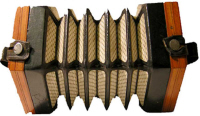 This tiny brewery was set up in 1992 in the Concertina Band Club at Mexborough, near Doncaster, essentially to brew beer for the club, though occasionally its beers seep out to beer festivals, especially since Roger Protz featured this particular beer in his 300 Beers To Try Before You Die. Concertina bands are a minor but significant tradition in the north of England, linked to the better known brass band movement which emerged in the 1880s. This tiny brewery was set up in 1992 in the Concertina Band Club at Mexborough, near Doncaster, essentially to brew beer for the club, though occasionally its beers seep out to beer festivals, especially since Roger Protz featured this particular beer in his 300 Beers To Try Before You Die. Concertina bands are a minor but significant tradition in the north of England, linked to the better known brass band movement which emerged in the 1880s.
Always keen to take recommendations from Roger, I was delighted when Bengal Tiger appeared in cask at the Great British Beer Festival in 2009, and not at all disappointed with my sample. Despite the relatively low gravity this is intended as an English India Pale Ale with rather more character than other common session beers bearing that designation, thus the name.
It’s a slightly hazy warm amber beer with an off-white head and a glyceriney, nettly and very fragrant aroma, with almost an elderflower perfume. The flowery theme continues on the sweetish palate which also has notes of ginger and grapefruit marmalade, artichokes and peach, meaty tones and a fresh hopsack bitterness. The sacky bittersweet finish has developing pepper over apricot nectar. So lots of hops character, but not overwhelming or overbalanced, resulting in a superbly drinkable beer.
Read more about this beer at ratebeer.com: http://www.ratebeer.com/beer/concertina-bengal-tiger/39295/
Top Tastings 2009
ABV: 4%
Origin: Ystradgynlais, Powys, Cymru
Website: Currently unavailable
Bryncelyn began as a tiny brewery in the cellar of the Wern Fawr Inn at Ystalyfera in 1999 and steadily built up a reputation as one of Wales’ best small cask ale breweries — it’s since expanded to new premises in industrial workshops at Ystradgynlais. The name means Holly Hill, linking to the wordplay of the beer names which almost all contain some reference to Buddy Holly. Unsurprisingly brewery founder Will Hopton is a huge fan of the ill-fated bespectacled pop star.
At British beer festivals I head first for the dark milds, and so it was that I encountered Buddy Marvellous from the cask at the National Winter Ales Festival in Manchester last year. It’s a chestnut-brown beer with a fine yellowy head and a pronounced malty, fruity, nutty aroma with notes of toast and fruit cake. The sappy, rich and fruity palate turns slightly astringent, with chalky hops offset by kind brown sugar, and there’s a very slight touch of smoke and cinder toffee in a finish that ends with woody flavours and a controlled note of peppery hops. That subtle smoke touch at the end was a pleasant surprise and kicked this beer, a former Champion Beer of Wales, into the Top Tastings list as an impressive and enjoyable example of its kind.
Read more about this beer at ratebeer.com: http://www.ratebeer.com/beer/bryncelyn-buddy-marvellous/31611/
Top Tastings 2009
ABV: 6.5%
Origin: Binche, Hainaut, Wallonie
Website: www.belgoobeer.be
 Binche / Belgoo Luppoo Historically, hop character hasn’t figured highly on the list of all the many and varied features of Belgian beers, which are better known for their richly malty, sweetish, sour and spicy flavours. According to lambic brewer Frank Boon, in the pre-war period high hop rates had become associated with bad brewing, as some local brewers saw hopping as an easy cheat to mask off flavours and other flaws. Over the past two or three years, however, a number of new beers have started to emerge that make hops a selling point. The trend has been driven first and foremost by the demands of the import market in the USA, where highly hopped beers are a key feature of the craft brewing scene, but there are signs that domestic consumers are also appreciating this new performance space for the resinous talents of humulus lupus.
Dry-hopped Luppoo is probably the best of these hoppy newcomers I’ve tasted in the past year. It comes from a small brewing concern that shares premises and kit with the longer established Binchoise brewery in the market town of Binche, also known as one of Belgium’s capitals of mardi gras carnival revelry. Both Belgoo and Binchoise have their own sets of recipes and do their own marketing.
The beer, which contains oats as well as barley malt and other than hops is left unspiced, pours a hazy blond with a massive just off-white head. There’s a fresh piny hop aroma with a slight detergent note and also hints of phenol and yeast. The lively palate has a complex grainy flavour and firm oily texture (the oats no doubt help here), with artichoke, salt toffee and vaniall pastry notes and a bite of hoppy lime flavours. The finish has that malty weight typical of a Belgian blond, but also lingering citric and piny hops with a pithy orange flavour. Like the other beers I’ve tried in the style, it’s nowhere near as aggressive as the IBU-busting monsters from some American craft brewers, and is one of the examples that gets the balance just right between preserving some traditional national character and giving the hop its voice.
A short piece by me about the emergence of Belgium’s new hoppy generation will appear in the next issue of Fuller’s Fine Ale Club‘s First Draught magazine. Other examples I”ve enjoyed are Chouffe Houblon, the beer that started the current trend, and Hopsinjoor, an entry from the Anker brewery of Mechelen, better known for its rich, dark Gouden Carolus.
Read more about this beer at ratebeer.com: http://www.ratebeer.com/beer/belgoo-luppo/98186/
Top Tastings 2009.
A shorter version was originally published in BEER November 2009 as part of a piece about strong ales for winter.
 Amager Imperial Stout ABV: 10.1%
Origin: Kastrup, Hovedstaden, Denmark
Website: www.amagerbryghus.dk
No roundup of winter brews would be complete without a real imperial stout, and one of the very best I’ve tasted comes from under the flight path of Copenhagen airport, and the shadow of mighty Carlsberg. The brewery was founded by Morten Valentin Lundsbak and Jacob Storm in a former air raid shelter as the first brewing undertaking in the area for 50 years. Amager Imperial Stout is one of a number of exciting beers now emerging from Denmark, where innovative micros have mushroomed over the last few years.
Brewed from a mixed grain grist of pale and dark barley malts, wheat malt, brown wheat flour and oats, the beer emerges a very dark chocolate brown with a thick fawn head. There’s plain chocolate, vanilla and exotic spice on the aroma, and a creamy dark malt palate with a spicy botanical hop hit over chocolate and petrolly notes, turning pursingly dry but with softening sugar. There’s lots of roast in the lengthy finish but without too much bitter overcharring, and also artichoke notes, sappy malt and luxurious dark chocolate. In fact the hop rate takes the IBUs north of 140, but given the malt and alcohol the beer certainly isn’t challengingly resinous. Overall this is a superb example of the style, packed full of complex flavours.
Read more about this beer at ratebeer.com: http://www.ratebeer.com/beer/amager-imperial-stout/78118/
Top Tastings 2009
ABV: 12%
Origin: San Diego, California, USA
Website: www.alesmith.com
 AleSmith Speedway Stout AleSmith brewery, based in the naval city of San Diego in southern California, emerged like many US craft breweries from the home brewing movement and has established itself as one of the most appreciated producers of big, strong “extreme” beers, with a range of specialities, often interpretations of European models with a lively twist, bottle conditioned in 750ml bottles. This huge imperial stout, dosed with coffee from local gourmet coffee roaster Ryan Brothers, is the example par excellence. It’s highly rated by beer enthusiasts — in its wood-aged form it was named best beer in the world on ratebeer, but this standard version is impressive enough.
Chocolate and black patent malts result in an oily black brew with a modest yellowy brown head and a big leathery malted milk and espresso aroma with a slight hint of mushrooms. The palate is equally thick and dark, dense and cakey with rummy brown sugar and light gravy malt notes, a touch of blackcurrant syrup and other red berries. The coffee is obvious but not overwhelming, becoming more pronounced in a chewy finish also bittered by roasted barley, with an effect a little like coffee nibs in chocolate. There’s also a touch of alcohol and a burry hop buzz. A big brave beer, certainly, but subtle, well-balanced and never overwhelming.
I’m grateful to the very generous San Diegan beer traveller who gave me the review bottle from a selection of samples he’d taken to the Zythos festival in 2008. Following the label’s advice that it will mature for 6-12 months, I kept it for around 10 months before drinking.
Read more about this beer at ratebeer.com: http://www.ratebeer.com/beer/alesmith-speedway-stout/14232/
Originally published in BEER June 2006 as part of a piece about beers in Asda supermarkets
ABV: 5 per cent
Origin: St Austell, Cornwall, England
Buy from: ASDA supermarkets
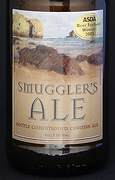 St Austell Smuggler's Ale I’ve been drinking a lot of St Austell beers recently: a trip deep into the brewery’s territory to research a pub walk coincided with receiving samples of this new bottle conditioned line. I’m not complaining: the Cornish brewery is one of the treasures among Britain’s remaining independent regionals.
St Austell’s credentials as a traditional vertically-integrated family brewery are impeccable. The 1893 Victorian brewhouse is still in use, descendants of founder Walter Hicks still sit on the board, there’s a regional pub estate with numerous long-serving tenants and a dynamic range of well-made and distinctive ales.
Smuggler’s Ale was created for the ASDA supermarket chain’s beer competition and selected by a tasting panel as one of four finalists put on trail sale last autumn. Emerging as the best seller of the four, it’s been rewarded with a national listing until the end of this year.
St Austell head brewer Roger Ryman is no stranger to winning supermarket competitions. His innovative spiced wheat beer Clouded Yellow, also a Real Ale in a Bottle and reviewed in this column a while back, emerged from the Tesco Beer Challenge.
The grist of of Smuggler’s Ale – anyone slightly familiar with the maritime history of Cornwall will require no explanation of the name – is 100% Brewer’s Gold, a malt made exclusively for the brewery from locally grown Optic Barley at Tuckers Maltings. Cascade hops are used for bittering, with Styrian and more Cascade for aroma.
As Roger Protz noted in last month’s Beer, Smuggler’s Ale is cold-filtered before being “dusted” with a special strain of fresh yeast that clings to the bottom of the bottle, making it much easier to pour clear than many other bottle conditioned beers.
While old hands might miss the ritual of careful pouring, many drinkers new to live bottled beer will welcome this and other recent “easy pour” beers, and the technique helps address retailers’ common complaint that customers don’t like too much sediment.
It certainly helps you appreciate the beer’s rich deep red-tinged amber tones, under a soft foamy off-white head. The aroma is flowery and biscuity, with hints of roast and a fresh squeeze of hop resins.
The chewy palate is packed with biscuity, grainy malt with a hop dryness from the start, very much in the brewery’s style, and hints of raspberry and mint. Resiny, peppery hops assert themselves firmly in a long finish over plenty of juicy malt.
Overall this is a delightful strong bitter full of freshness and flavour that well deserves to join Clouded Yellow as a permanent line.
More Asda beers in next post.
Read more about this beer at ratebeer.com: http://www.ratebeer.com/beer/st-austell-smugglers-ale/51672/
Originally published in BEER May 2006. Also featured in BEER August 2008 as part of a piece about beers for summer outdoor drinking.
For more milds see previous post.
ABV: 3.4 per cent
Origin: Rougham, Suffolk, England
Buy from: Specialists, local farmers’ markets
Website www.bartramsbrewery.co.uk
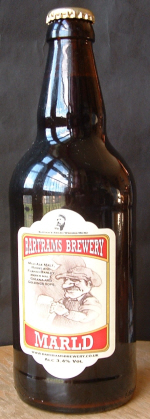 Bartrams Marld I first encountered Marc Bartram’s beers a couple of years back in the now-sadly-closed Pitfield Beer Shop. I picked up a couple because they looked interesting and another customer commented spontaneously: “Really good beers, those”. He wasn’t wrong.
Originally launched at Thurston Granary, just east of Bury St Edmunds, in 1999, the brewery struggled to find suitable premises for a while but since last year has been achieving excellent results at its new home on a nearby former airfield, on the other side of the A14.
The Captain Bill Bartram of the bottle labels is actually the alter ego of Marc himself. There was a real Captain Bill, though no relation, who brewed at Tonbridge, Kent, at the turn of the last century. As well as their distinctive design, the labels have the added attraction of being especially informative about the beers within.
Thus we learn that Marld contains mild ale and amber malt, roasted barley, Galena and Goldings hops. Relishing the stereotype, the label portays a cloth-capped working man standing in the shadow of a giant Soviet Realist spanner.
The beer pours a deep ruby brown with a good thick fawn head. There’s a very distinctive sharp and nettly aroma of roast, geranium and blackberry, slightly sweaty and rather alluring.
A roasty, ash-dry palate is softened by fruity blackberry, elderflower and salad notes, and the texture somehow contrives to mix a lively carbonation with a soft creaminess.
Big dry plain chocolate develops far back and comes to the fore in the finish, which is also coffeeish and chewy with slightly resiny hops, and very long lasting.
Another roasty mild, but done with great panache, adding lots of subtle and unusual tastes and a superb balance to achieve astonishingly full flavours for such a low gravity, with a robustness that works very well in the bottle. If you can’t get to the pub during May, lay in a case of this and you’ll still have a very happy mild month.
Read more about this beer at ratebeer.com: http://www.ratebeer.com/beer/bartrams-marld/44171/
Originally published in BEER May 2006
Note this brewery has since closed. For more milds see previous post.
ABV: 4.2 per cent
Origin: Little Downham, Cambridgeshire, England
Buy from: Brewery, specialists
Mail order: tel 01353 699966, www.elybeer.co.uk
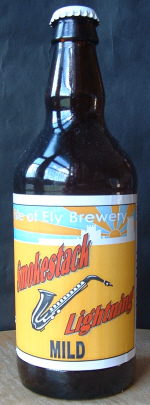 Fenland / Isle of Ely Smokestack Lightning Fenland opened in Chatteris in 1998 and moved to the Isle of Ely in 2004 after a change of ownership, adding a Real Ale in a Bottle range only last year. Smokestack Lightning was a stalwart of the original range but was dropped for a while. Revived in 2005 with a new recipe, it went on to win SIBA’s Eastern region best mild award in its draught form.
A complex grist of Maris Otter pale, crystal, carapils, chocolate and black malts gives the beer a very dark mahogany colour, with a lively carbonation throwing a fawn head that declines to big bubbles. The roasty chocolate aroma has a fresh fruity tang with a hint of spice.
Sharp roast notes on the palate are accentuated by the high condition but with plenty of chewy malt and nuts beneath. A cola, dark chocolate and coffee finish with a moreish fruit tang has an emerging burry hop bitterness from First Gold, Goldings and Fuggles.
Prompted by my enquiries to check the provenance of the saxophone on the label, the brewery discovered it had no connection to Lightning Hopkins, performer of the old blues tunes for which the beer is named, but had only been used because it “looked good”. As a result they’ve designed a new label featuring a steam train!
The name is also appropriate in another way: smoke and roast are clearly “in” for new milds. Modern brewers dosing the grist with roasted barley might be nodding consciously to the past, when technical limitations on malting rendered most beers smoky. On the other hand, they may simply assume their customers expect all dark beers to taste like dry stout
More milds in the next post.
Read more about this beer at ratebeer.com: http://www.ratebeer.com/beer/fenland-smokestack-lightning/34982/
Originally published in BEER May 2006
ABV: 3.6 per cent
Origin: Ickburgh, Norfolk, England
Buy from: Brewery, local farmers’ markets, specialists
Mail order: tel 01842 878922, www.icenibrewery.co.uk
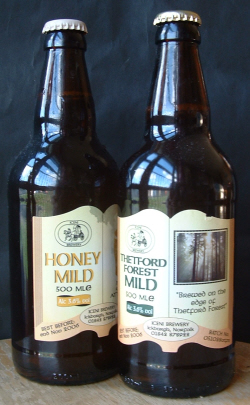 Iceni Honey Mild and Thetford Forest Mild A few years back, each May arrived with a tough challenge for your humble reviewer: finding a new bottle conditioned mild to write about. But in the last couple of years rising interest in both bottled beers and specialist styles has made the challenge easier to meet.
Real Milds in a Bottle are still far from common but there are noticeably more around – this year’s three examples, all at session gravities and all from the East of England, by no means exhaust the current choice.
And a good job too, since world classic Sarah Hughes Dark Ruby remains unavailable in bottle (though the brewery are optimistic it should return soon), Pitfield’s historic 1824 Mild has been relegated to the occasional list, and another stalwart featured in a previous column, Gales Festival, might not survive the move to Fullers.
Real Ale in a Bottle specialist Iceni, founded in the rural Brecklands by former food industry worker Brendan Moore in 1995, is proud of its regional identity: the bottles boast that the beers use Maris Otter barley from Branthill Farm at Wells-next-the-Sea (where there is also a farm shop selling these and other East Anglian brews), floor malted by Crisp at Great Ryburgh.
The Celtic look of the “open book” labels references the Iceni people who formerly inhabited this area and, under Queen Boudicca, famously resisted Roman military might. The local focus and good presentation help the brewery sustain a trade in small runs through their own shop and visitor centre as well as local farmers’ markets.
Thetford Forest Mild, named after a nearby area of woodland and heath, is a deep ruby brown beer with a pungent aroma of roast and cedar smoke alongside dark malt and a faint trace of farmyard. Crystal malt and flaked and roasted barley are used alongside the Branthill pale malt, with Fuggles and Challenger hops.
The smooth, light palate has chocolate, cola and tart plum fruit, leading to a tangily fruity finish drying out with rounded but not bitter hops, and more roast and woodsmoke notes.
A second mild, Honey Mild, is a variant on Thetford Forest but with the addition of – you’ve guessed it – honey. While broadly similar to its parent in taste, this has subtle pollen and honey notes in aroma and finish, with a livelier condition and a slightly sweeter, fuller flavour that seems to both underline and better balance the roastiness.
I have a marginal preference for the honey version, but could happily drink either – they’re both very welcome examples of easy drinking dark beers, made with care from high quality ingredients.
More milds reviewed in following post.
Read more about these beers at ratebeer.com:
http://www.ratebeer.com/beer/iceni-honey-mild/48311/
http://www.ratebeer.com/beer/iceni-thetford-forest-mild/14020/
|
Cask  This pioneering new book explains what makes cask beer so special, and explores its past, present and future. Order now from CAMRA Books. Read more here. This pioneering new book explains what makes cask beer so special, and explores its past, present and future. Order now from CAMRA Books. Read more here.
London’s Best Beer  The fully updated 3rd edition of my essential award-winning guide to London’s vibrant beer scene is available now from CAMRA Books. Read more here. The fully updated 3rd edition of my essential award-winning guide to London’s vibrant beer scene is available now from CAMRA Books. Read more here.
|













